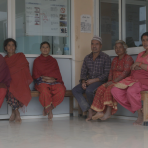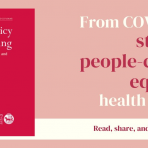By Warren Kaplan
The increase in global spending on medicines has been dramatic, with an approximate per capita increase of 50% between 1995 and 2006. In a recently published paper, Nguyen et al. reviewed the literature on pharmaceutical pricing and purchasing policies. They found that no one option is preferred and suggest that, optimally; policy makers should have a range of country/context-specific options. Nguyen et al. assert that the movement towards universal health coverage (UHC) will create monopsony (i.e., buying) power for medicines among low- and middle- income countries (LMICs).
That might be the case, but there is much work to be done. In particular, implementing UHC, attempting to pay for medicines to treat non-communicable diseases (NCDs) and assuring access to medicines could bring many LMICs to their knees. There are many reasons for this, among them are the following:
Many LMICs are saddled with a potent combination of weak governmental regulation and poor legal/administrative systems.
Financially integrating sustainable NCD prevention and treatment is a difficult task. The U.S., for its part, spends billions on population strategies to reduce consumption of tobacco, alcohol, and salt, and individual-level treatment and prevention of diseases such as heart disease, stroke, cancer and diabetes. LMICs have no such luxury. Is the global community willing to help them? I dare you to try to find mention of NCDs in the Millennium Development Goals.
NCDs pose a heavy financial burden in all countries, especially on poor households. In LMICs, medicines are usually the largest component of NCD costs.
In particular, in the treatment of diabetes, insulin represents an important source of spending for patients and their families .
Whether insulin or another treatment is needed, most assuredly, the use of originator brand medicines will lead to higher than necessary expenses at all levels of the healthcare system. Price surveys over the past decade conclusively show that generic medicines can be inexpensive, but in many LMICs they are simply not available in the public sector, forcing people into the private sector – where they are expensive.
Even generic companies need to make money and quite often, people pay an unnecessary premium for a ‘branded generic’. For instance, in the U.S., OxyContin®, in sustained release form, contains the identical active ingredient to immediate-release oxycodone, with monthly costs about six times higher than oxycodone, even with insurance . We found that branded generics are dominating the private sector in many LMICs where unbranded generics make up only a small percentage of market share.
The high level of out-of-pocket (OOP) payments is a barrier to UHC and access to medicines.
Here, Ghana is an unfortunate poster child. Although the Ghanaian rollout of UHC is an impressive achievement, high OOP payments still dominate healthcare financing in Ghana. It has been reported that OOP payments accounted for just over a third (37%) of the total national health expenditure in 2009.
Evidence on pricing and purchasing strategies in LMICs would clearly benefit from more human resources, a strong academic base and – on a good day – interested (more or less) policy makers to understand and use the evidence. I can only speak for myself, but on a bad day, I am like the fellow in the old joke who dropped his wallet somewhere else but is looking under this streetlamp because that’s where the light is. I find myself looking for answers where the light (i.e., grant money, laziness, networks of familiar collaborators) is rather than where the truth is more likely to be.
Nothing is guaranteed to provide more light, but finding a forum for diverse and creative ideas is a start. Witness the meeting in June 2013 bringing together a large group to “…advance the understanding of the important role medicines play in UHC expansion”.
A solution
I modestly propose something more radical. Find a specific problem to solve in the financing/price/access conundrum. Pose it to some experts with real-world experience in political science, in advocacy (i.e., a journalist, a film maker), in behavioural economics, medical anthropology, public health, and business. Normally, these people would probably never speak to each other. Add more people to the mix, if desired, but keep the number under ten. Stir well, keep them fed and comfortable for 2 days and see what happens. Do this exact exercise for the same specific problem ten times in different places around the world.
Nothing is guaranteed, but substantial investments in public health education and management are needed. Create a cadre of MBAs with public health expertise in Africa/Asia. I did a cursory web search and found that there are 4 business school in Angola, 8 in Ghana (Query: were they consulted when the Ghanaian UHC was designed?), 3 in Cameroon, 1 in Namibia, at least 12 in Nigeria, 3 in Tanzania, 3 in Tunisia, 12 in Uganda, 1 in Rwanda and more than 20 in South Africa. Do these schools offer joint MBA/MPHs? The middle management of LMIC pharmaceutical companies should be required to take on LMIC business school and public health student interns. LMIC pharmaceutical companies should require their managers to take courses in public health.
Nothing is guaranteed. Better to light a single candle, than curse the darkness. Now, where did I leave that wallet?
Warren Kaplan is Assistant Professor of International Health at Boston University
















